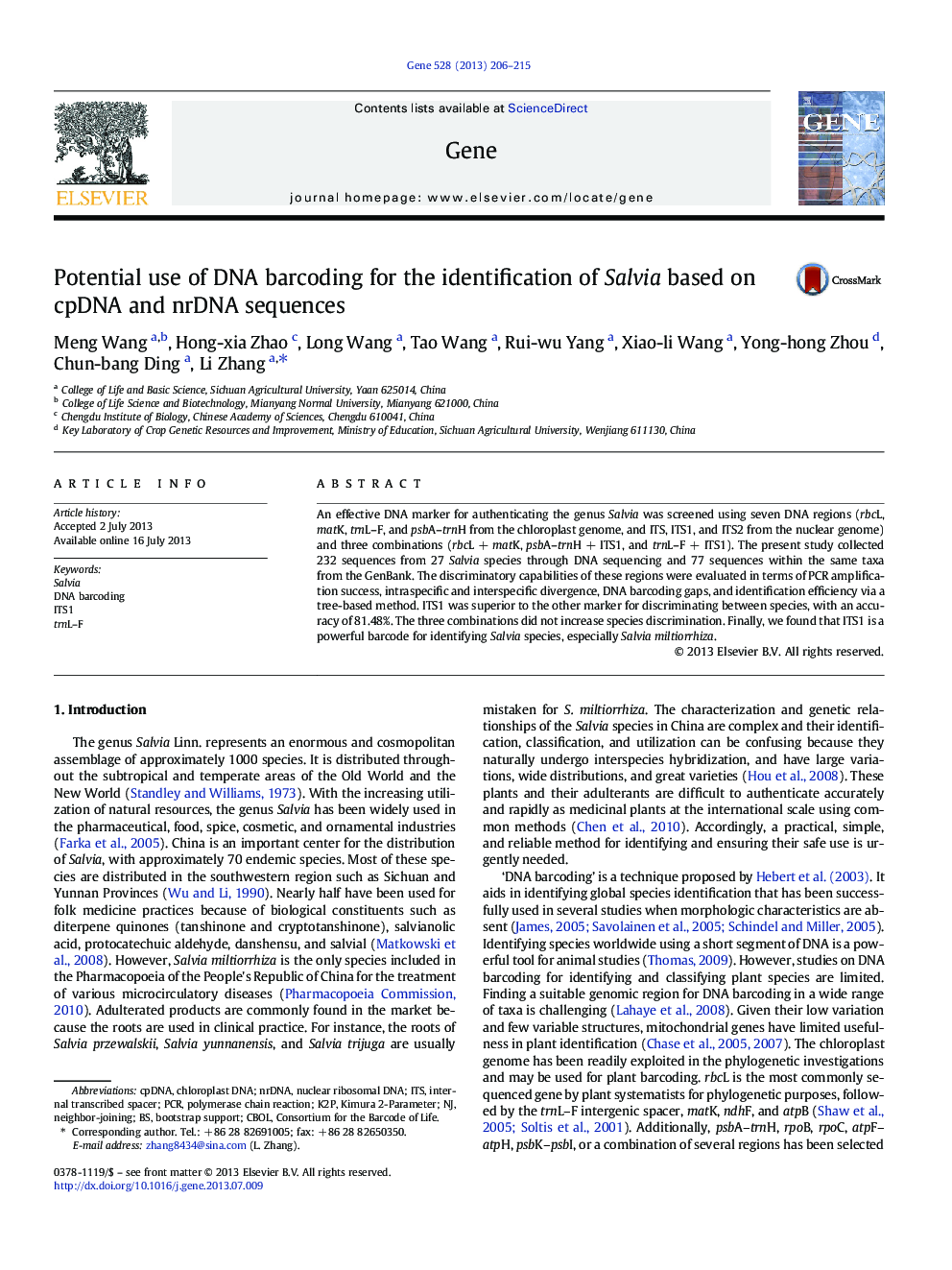| Article ID | Journal | Published Year | Pages | File Type |
|---|---|---|---|---|
| 2817087 | Gene | 2013 | 10 Pages |
•DNA barcoding was used to identify different species among closely related species.•Four chloroplast, three nuclear genome and three combinations were evaluated.•The cloned PCR products were sequenced and increased data reliability.•We propose a new method for the identifying genuine S. miltiorrhiza.•A reliable method for ensuring the safe use of medicinal plants was suggested.
An effective DNA marker for authenticating the genus Salvia was screened using seven DNA regions (rbcL, matK, trnL–F, and psbA–trnH from the chloroplast genome, and ITS, ITS1, and ITS2 from the nuclear genome) and three combinations (rbcL + matK, psbA–trnH + ITS1, and trnL–F + ITS1). The present study collected 232 sequences from 27 Salvia species through DNA sequencing and 77 sequences within the same taxa from the GenBank. The discriminatory capabilities of these regions were evaluated in terms of PCR amplification success, intraspecific and interspecific divergence, DNA barcoding gaps, and identification efficiency via a tree-based method. ITS1 was superior to the other marker for discriminating between species, with an accuracy of 81.48%. The three combinations did not increase species discrimination. Finally, we found that ITS1 is a powerful barcode for identifying Salvia species, especially Salvia miltiorrhiza.
